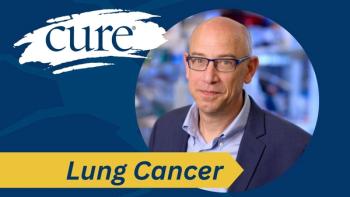
Gavreto ‘Very Well Tolerated’ in RET Fusion-Positive Non-Small Cell Lung Cancer
Findings demonstrated that Gavreto could clinically benefit those with RET fusion-positive non-small cell lung cancer, including those who are treatment naïve.
Patients with RET fusion positive non-small cell lung cancer who received 400 mg of Gavreto (pralsentinib) once per day responded well to treatment and was tolerated, as shown by improved objective response rates.
“These data are real important because it supports the importance of early biomarker testing for all patients with metastatic NSCLC prior to treatment initiation to inform optimal healthcare decisions,” said Dr. Giuseppe Curigliano, associate professor of medical oncology at the University of Milano in Italy, during a presentation at the 2021 virtual ASCO Annual Meeting.
RET fusions are targetable oncogenic drivers that are present in 1-2% of non-small cell lung cancer diagnoses. Currently, Gavreto is approved in the U.S. for treatment of RET fusion-positive NSCLC and advanced or metastatic RET- altered thyroid cancers.
The phase 1/2 study was conducted at 84 sites in 13 countries. In particular, the safety population for this study included 233 patients with RET fusion-positive NSCLC and 238 patients with other RET-altered solid tumors. In particular, 216 patients (median age, 60 years; 48% men) with RET fusion-positive NSCLC had measurable disease.
Originally patients who were treatment-naïve were not eligible, which was a requirement that was later removed by a protocol amendment. There were 25 patients who were enrolled after this eligibility revision (median age, 54 years; 44% men).
A major focus of this study was objective response rate (the rate of a measurable response to the treatment). Follow-up was conducted for a median of 17.1 months.
For the 216 patients who received Gavreto and were RET fusion-positive objective response rate was 69%, disease control rate of 92%, clinical benefit rate was 77%, median duration of response was 22.3 months and median progression-free survival at 16.4 months
In the post-eligibility population with 25 patients, the objective response rate was 88%, clinical benefit rate was 88% and disease control rate was 96%. In addition, median duration of response and median progression-free survival were not reached.
Curigliano said the treatment was “very well tolerated.” Overall, 26 patients (6%) out of 471 patients in the entire study discontinued treatment due to side effects. Some common side effects included increased alanine aminotransferase indicating potential liver damage, constipation and high blood pressure.
For more news on cancer updates, research and education, don’t forget to





